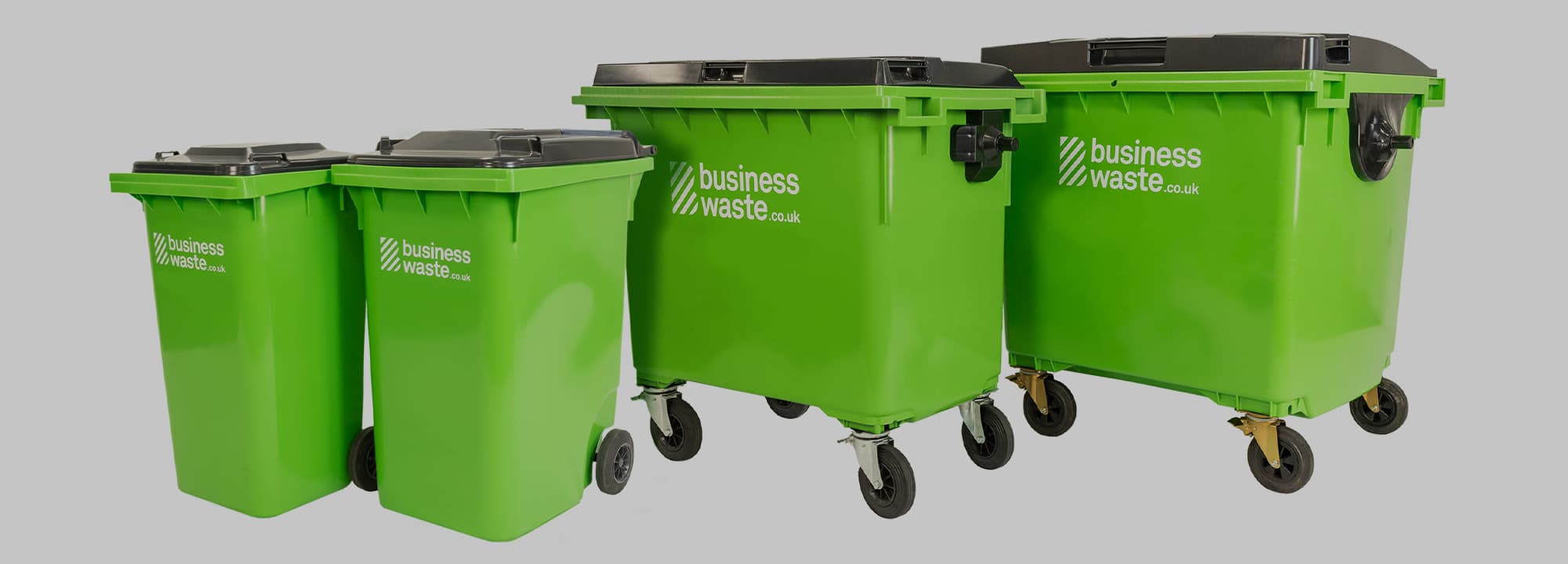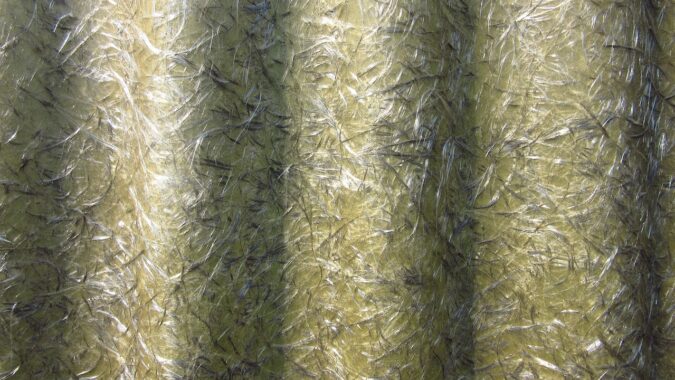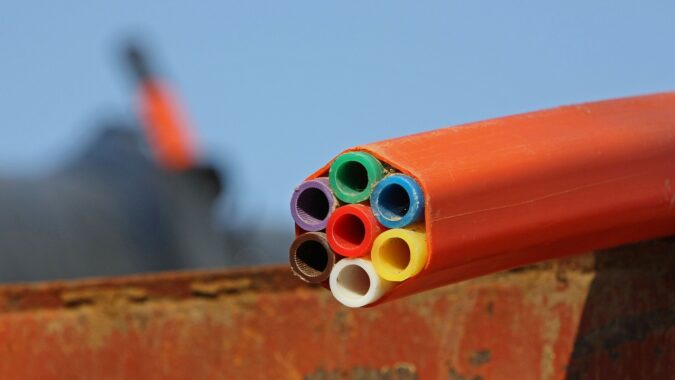
Fibreglass Recycling
Fibreglass, glass reinforced plastic (GRP), and even glass fibre are all interchangeable terms for the same type of plastic. It’s a lightweight, strong, waterproof, and impact-resistant material that’s growing in use for everything from protective barriers to car parts, bathtubs, and aquarium tanks. Every year about five million metric tons of fibreglass are manufactured.
Problems arise when it comes to dealing with waste fibreglass. The glass fibre to composites market creates nearly 1.4 billion kilograms of waste per year. It’s much harder to recycle fibreglass compared to other types of plastic because of the glass fibre content. Previously, fibreglass would be disposed of with general waste and likely go to landfill.
Today, fibreglass recycling is possible but it’s not as straightforward a process as recycling other plastics. Discover how recycling fibreglass works in this guide. Or if you’ve got lots of waste fibreglass for disposal contact us today for a free quote for plastic waste collection – call 0800 211 8390 or contact us online.

Get a free quote
Get a fast FREE quote for fibreglass recycling
- Free quote within 1 hr
- Any type of fibreglass
- FREE bins and delivery
- We cover all of the UK
What is glass reinforced plastic?
Glass reinforced plastic (GRP) – also known as fibreglass – is a composite material made from two materials with different physical or chemical properties. It’s a type of plastic reinforced with fine fibres made of glass and resin. This makes it a strong, durable, lightweight, and flexible material with many uses.
GRP is waterproof, easy to repair, and rot and impact resistant. There are more than 40,000 applications of fibreglass across many industries. Initially, fibreglass was developed in the 1930s for use as an insulation material for buildings. Today it’s used for everything from boat manufacturing to wind turbines.
Common items made from or that include fibreglass are:
- Swimming pools
- Boat hulls
- Protective barriers
- Surfboards
- Circuit boards
- Car bumpers
- Bathtubs
- Windows
- Roofing
- Spas and hot tubs
Can you recycle fibreglass?
You can recycle fibreglass, but the process is less common than recycling other types of plastics and comes with various challenges. Recycling fibreglass is possible at facilities with the appropriate equipment. However, this equipment is expensive, which is why many waste management sites and recycling centres don’t recycle fibreglass waste.
With more products made from GRP, there’s now more waste produced and a greater demand to recycle fibreglass. For example, wind turbine blades made from fibreglass last for 20 years and then need disposing of. Unfortunately, many have been landfilled. This isn’t a sustainable solution with wind turbine blades expected to create 200,000 tons of waste by 2034.
The main challenge with recycling fibreglass is that shredding or grinding destroys many of the glass fibres. This reduces their size, strength, and usefulness for future applications. There’s also no easy way to separate the plastic and glass fibres to recycle and process each material individually.
Due to the glass fibre content, you can’t recycle fibreglass or GRP with other types of plastic. Therefore, it must not be stored with plastic waste to avoid contaminating the stream. It’s also tricky to recycle fibreglass at home, as few local authorities or councils will recycle fibreglass waste. You can contact us at Business Waste for help.
How is fibreglass recycled?
There are various recycling methods for fibreglass, which each produce different results that determine what happens to the GRP next. The exact recycling method can depend on the facility, its equipment, and the processes in place. Three main methods of fibreglass recycling are:
- Grinding – waste fibreglass is cut up and then shredded into even smaller pieces or powder. These tiny pieces and powder are reused in other products, such as filler in cement, artificial wood, or asphalt. It leaves little to no waste with as much fibreglass as possible ground up and reused. However, the process is labour-intensive and damages the glass fibres so they can’t be used in the same way as new glass fibre.
- Incineration – burning or thermal oxidation uses the waste fibreglass to generate heat for other uses. This could be creating steam to power turbines generating electricity or to heat cement kilns. The heat damages the glass fibres, making them useless, but any residue or leftover fibres can be used for strengthening concrete. Incineration produces ash, which is often disposed of in landfill.
- Pyrolysis – this process chemically decomposes or transforms fibreglass into recoverable substances – pyro-gas, pyro-oil, and a solid byproduct. Fibreglass is shredded into small squares and added to a pyrolysis reactor by a vacuum assist. This draws off most of the oxygen in the atmosphere. It’s then heated to incredibly high temperatures of around 500°C and hydrocarbons in the resin decompose into gas. Pyro-gas and pyro-oil are separated and used as natural gas replacements, blended with other fuel oils, or added to asphalt.
Why is fibreglass
recycling important?
Fibreglass recycling is important because there’s more of the material in use than ever before, which leads to more waste being created. Recycling is a sustainable solution as it ensures most of the material is put to good use rather than ending up in landfill, where its chemical contents can leach into the ground and air.
Fibreglass does not decompose in landfill as it’s strong, designed not to rot, and can’t be broken down by microorganisms. Incinerating fibreglass waste can also release emissions and greenhouse gases that contribute to pollution levels. While recycling rarely turns it into new fibreglass and there’s little demand for recycled fibreglass products, recycling is still better for the environment.
Recycling fibreglass for businesses also lowers your commercial waste disposal costs. It reduces the amount of landfill tax you must pay to get rid of waste fibreglass as it’s recycled rather than going to a landfill site. This saves your company money and helps protect the environment rather than adding tons of salvageable fibreglass waste to landfill.

How to dispose
of GRP
To dispose of GRP waste from your business you must arrange commercial waste collection by licensed waste carriers. It can’t be stored and removed with the rest of your plastic waste, unlike most other types of plastic. Instead, you should dispose of GRP separately and responsibly by following these steps:
- Start with a free no obligation quote for GRP/fibreglass waste collection. Simply tell us the amount of waste fibreglass you’ve got so we can work out the best type and size of bins, how often you need them collected, and your UK location for a bespoke quote.
- We’ll deliver free bins to store your fibreglass safely onsite – you just cover the collection costs. Place your old fibreglass products and offcuts in these bins and containers within their max fill lines and weight limits, separate from other plastic waste.
- Take your bins over to the agreed collection point ahead of the removal time. Licensed waste carriers will come and remove your fibreglass waste and replace your bins if you’ve arranged regular collections.
- The fibreglass waste will be transported to an appropriate waste management facility that has the equipment and processes in place to recycle fibreglass. It will be checked, sorted, and recycled via the method the facility uses.
- You’ll receive a free duty of care certificate confirming the safe, legal, and responsible storage, removal, and disposal of your waste fibreglass.
Disposing of GRP at home is tricky as most councils and local authorities don’t accept fibreglass in domestic recycling bins. Many household waste recycling centres (HWRCs) also don’t accept old fibreglass for recycling. This means it often ends up with general waste, which is sent to landfill or for incineration. There are other ways to dispose of GRP at home:
- Donate to a charity – consider offering any unwanted fibreglass products to a local charity or community cause, even if they’re not in good condition. Some charities focus on upcycling items including those made from fibreglass such as old boats. Either way, it keeps the material out of landfill.
- Sell waste to a salvager – some people and companies may pay you for old products made from GRP or sheets of fibreglass. Search for any salvagers in your area to see if they’re interested in your waste GRP.
- Contact Business Waste – we can help with some one-off collections of waste fibreglass from your home or business. Call our team or contact us online for a free quote and a fast solution to dispose of old fibreglass.

Who needs to
recycle fibreglass?
Any organisation that produces waste fibreglass should send it for recycling. This could be old products that contain or are fully made from fibreglass you no longer need or sheets of damaged GRP. Recycling fibreglass benefits the environment and saves your company money on commercial waste disposal costs. Common industries that need to recycle fibreglass include:
Arrange waste fibreglass collection
Book collection of waste fibreglass anywhere in the UK with Business Waste. Get a free no obligation quote for the removal and recycling of your GRP waste based on the amount you need to dispose of and location of your business. One-off and regular collections of fibreglass waste are possible.
We can deliver free bins to separate and store your old fibreglass safely and securely before its removal – you only pay for collection. Speak to one of our expert team if you’ve got any questions and request a free quote today. Call 0800 211 8390 or contact us online.
Fibreglass recycling FAQs
-
What can recycled fibreglass be used for?
Most recycled fibreglass is either crushed or heated in processes that destroy the material so it can’t be used like new fibreglass. Instead, crushed or powdered fibreglass is used to strengthen concrete or added to asphalt. Fibreglass waste that’s heated through the process of pyrolysis creates a pyro-oil, pyro-gas, and solid by-product.
The pyro-gas can be used as an alternative to natural gas and as a fuel for the burners of pyrolysis reactors – ensuring it’s self-sustainable. Pyro-oil is often blended with other fuel oils as its less valuable than crude oil.
-
Is fibreglass hazardous waste?
Fibreglass is not a type of hazardous waste despite being made from a combination of chemicals. It’s a type of plastic that’s not classed as hazardous. However, proper disposal and recycling of fibreglass must be done where possible to prevent the risk of environmental damage if waste fibreglass ends up in landfill.
-
Is fibreglass biodegradable?
Fibreglass is not biodegradable. Microorganisms will not break down waste fibreglass and weather conditions, chemicals, and other environmental factors won’t help GRP decompose. It won’t rot either, though exposure to UV can make it brittle. Therefore, waste fibreglass should never go to a landfill site or be sent for composting.
-
Why is fibreglass used so much?
Fibreglass is used in a wide range of products and applications for a few reasons, as it’s:
- Cheaper than the likes of carbon fibre
- Stronger than most metals with a similar weight
- Flexible for moulding into many shapes
- Impact resistant and shatterproof
- Non-magnetic and non-conductive
-
What is the lifespan of fibreglass?
The lifespan of fibreglass depends on its application. There’s no set number of years fibreglass will last, and it can be affected by environmental factors and human interaction (such as physical damage). The general lifespan of various fibreglass products are:
- Fibreglass insulation lasts between 80 and 100 years
- Fibreglass boats and roofing can last for up to 50 years
- Wind turbine blades made from fibreglass have a lifespan of 20 years
-
What recycling code is fibreglass?
Even though fibreglass is technically a type of plastic it doesn’t fall into one of the seven plastic recycling codes due to its glass contents. It’s a composite material, made from more than two materials with different physical or chemical properties. The plastic and glass fibres can’t be separated easily, so fibreglass isn’t recycled with any type of plastic.
Get a fast and free quote
Get a fast FREE quote for plastic waste collection
- Free quote within 1 hr
- Any type of waste plastic
- FREE bins and delivery
- We cover all of the UK
